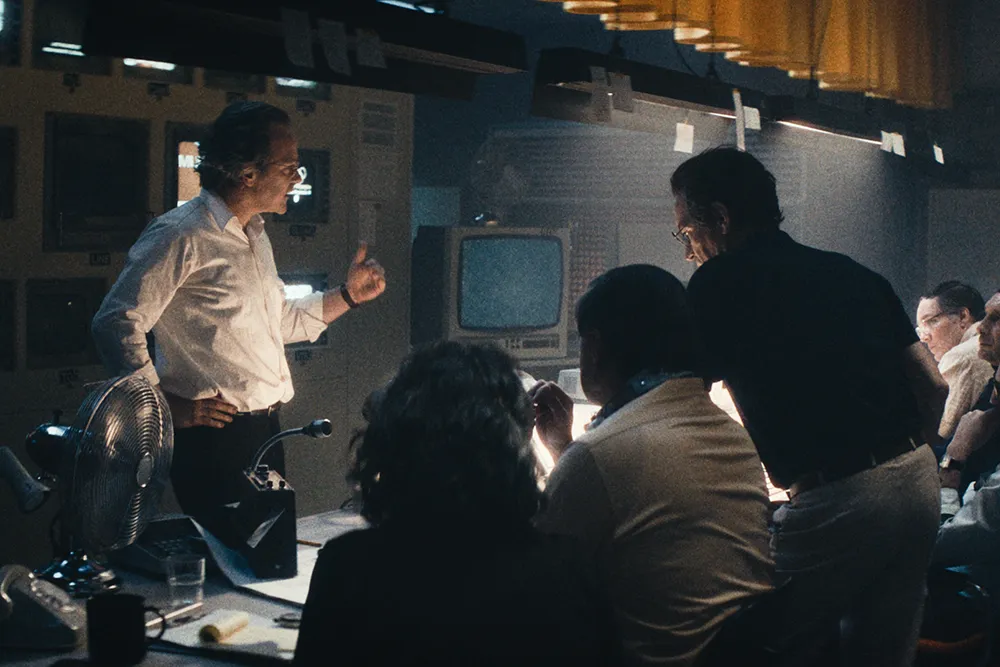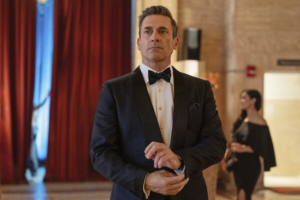Director Tim Fehlbaum shifts genre from science fiction to historical nail-biter for his latest film, “September 5,” from Paramount Pictures. Fehlbaum also co-writes the screenplay with Alex David and Tim Fehlbaum.
In an era characterized by the rapid dissemination of information, the film “September 5” effectively underscores a significant turning point in live reporting and journalism. Set against the backdrop of the 1972 Munich Summer Olympics, the film critically examines how a sporting event became the stage for a catastrophic global crisis.
With a discerning eye for drama and subtleties, “September 5” narrates the experiences of an American sports television station as it becomes entangled in a high-stakes hostage situation involving Israeli athletes. The narrative focuses on Geoff, portrayed by John Magaro, a young and resolute producer. Magaro’s performance adeptly captures Geoff’s tenacity, engaging the audience in his efforts to navigate the complexities of a high-pressure television environment while addressing the grave threat to human lives.
A notable component of the film’s appeal lies in its casting choices, particularly Peter Sarsgaard, who plays Roone Arledge, the distinguished television executive, and Leonie Benesch, who portrays Marianne, a compassionate German interpreter. Their interactions seamlessly blend the personal and professional, illustrating the considerable stress experienced by Geoff and his team to provide timely information amidst ethical challenges. Sarsgaard’s depiction of Arledge symbolizes the progressive yet impatient drive that characterized a new era of news broadcasting, while Benesch’s character offers a stabilizing influence in the face of chaos.
“September 5” does not shy away from addressing the ethical dilemmas of real-time crisis reporting. As rumors proliferate and time diminishes, an escalating sense of urgency permeates the characters and the audience. Geoff’s internal conflict between sensationalist reporting and genuine empathy for the captives and their families resonates deeply with contemporary media ethics discussions.
The film’s visual presentation, set design, and costumes are meticulously crafted to represent the 1972 era authentically. The cinematography juxtaposes the grandeur of the Olympics with the unfolding tragedy, thereby highlighting the stark transitions between moments of joy and despair. What distinguishes “September 5” from other works is its exploration of the broader implications of that tragic day, which extend beyond those directly affected to encompass the media industry.
As Geoff and his crew seek to fulfill their obligations in reporting a story that reached an audience of a billion, the film prompts critical reflections on the responsibilities of broadcasters in the face of disaster. It serves as a poignant reminder that one must remain cognizant of the human elements involved amidst the relentless pursuit of information.
“September 5” transcends the mere retelling of a notorious event; it investigates the interplay among media, accountability, and the evolving human experience. With compelling performances, a thought-provoking narrative, and relevant themes, the film allows for sustained contemplation long after the credits conclude.
Whether interested in history, media studies, or narrative storytelling, “September 5” offers a significant opportunity for reflection on the complexities of modern journalism.
Final Grade: A
“September 5” is scheduled to expand wide on January 17, 2025.





